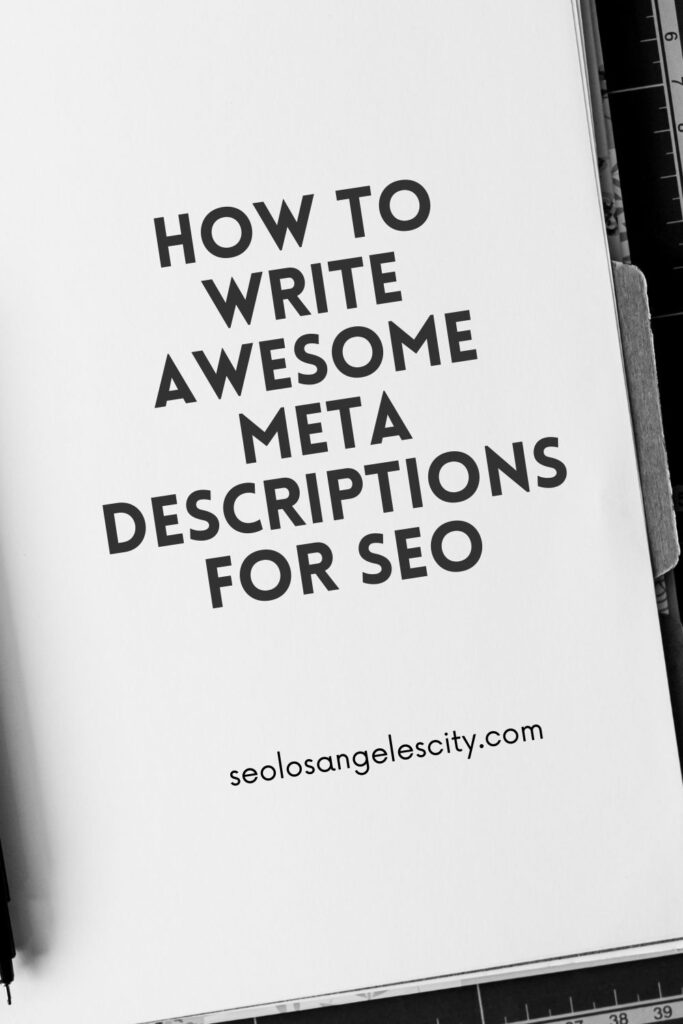
Writing Awesome Meta Descriptions for SEO
Meta descriptions are short snippets of text that appear in search engine results pages (SERPs) below the page title and URL. They provide a brief summary of the content on a web page and can help improve click-through rates on your website. Writing compelling meta descriptions is essential for Los Angeles search engine optimization (SEO) and can lead to increased traffic and conversions. Here are some tips for writing good meta descriptions:
1. Keep It Concise
Meta descriptions should be no longer than 155-160 characters, including spaces. Keep your message clear and concise. Focus on the most critical information, composing something that is short but powerful.
2. Use Active Voice
Active voice is more engaging and compelling than passive voice. Indeed, that is why active voice should be the primary voice used in essays. Use strong verbs to convey action and make your message more persuasive.
3. Highlight Your Unique Selling Proposition
Your meta description should highlight what differentiates your page from your competitors. What makes your content unique and valuable? What can you give your customers that others can’t? Don’t be cookie-cutter!
4. Include Relevant Keywords
Keywords are essential for SEO and can be added to just about anything on your website, including meta descriptions. Including relevant keywords in your meta description can help improve your search engine rankings. Ensure your keywords are relevant to your page’s content and accurately reflect the user’s search intent. Also, try to incorporate the keywords flawlessly into the meta description–using long, clunky keywords can make it sound awkward and unattractive.
5. Avoid Duplication
Each meta description should be unique and specific to the content on the page. Avoid using duplicate meta descriptions or copying and pasting content from the page. It’s only 155-160 characters–copy-pasting something as short as that isn’t a good look!
6. Address the User’s Search Query
The meta description should address the user’s search query and clearly answer their question. Make sure your message aligns with the user’s intent and provides a solution to their problem.
7. Use Emotional Language
Emotions does a lot to drive action and engagement. Use emotional language to appeal to users’ desires, fears, or aspirations to really compel them to click onto your website.
8. Provide a Call to Action
A call to action (CTA) encourages the user to take action and visit your website. Use a strong CTA to encourage clicks and engagement.
9. Test and Refine
Meta descriptions should be tested and refined over time to improve effectiveness. Use analytics tools to measure click-through rates and adjust your meta descriptions accordingly.
10. Be Accurate
Your meta description should accurately reflect the content on the page. Avoid misleading or false information, which can decrease trust and credibility.
Conclusion
In summary, writing good meta descriptions is an integral part of SEO and can help drive traffic and conversions to your website. Keep your meta descriptions concise, use active voice, highlight your unique selling proposition, include relevant keywords, avoid duplication, address the user’s search query, use emotional language, provide a call to action, test and refine, and be accurate. You can write compelling meta descriptions that drive results by following these tips.
See related blog here: https://www.seolosangelescity.com/accelerating-your-seo-progress-tips-for-speedy-results/-


